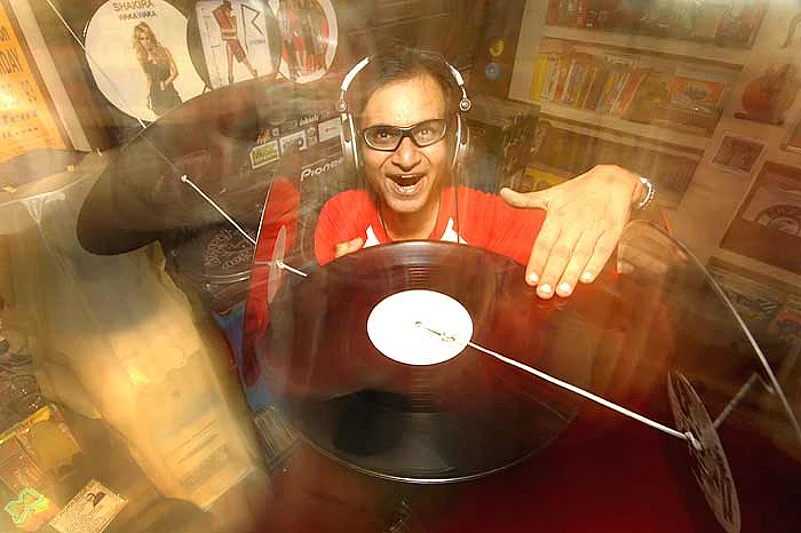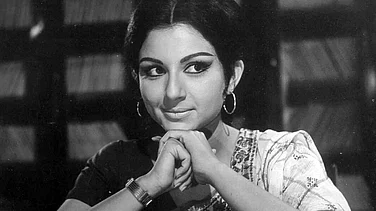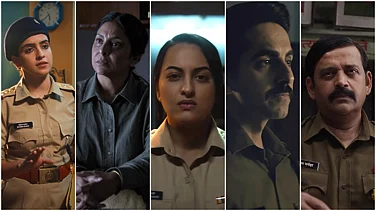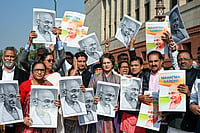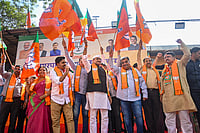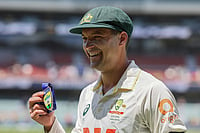Home-Grown Talents
Long-playing records ruled the Indian music scene through the 1920s and well into the ’70s. The turntable lost its pride of place to colour televisions in the ’80s. Soon, music went digital with CDs and from there, to formats like the mp3. Here’s how ‘native’ music began to play and thrive in British India, leading to the creation of the first vinyl record factory in Sealdah.
- 1902: London’s The Gramophone and Typewriter Ltd (GTL) sends Frederick W. Gaisberg to Asia on a ‘recording expedition’. He arrives in Calcutta with 600 blank discs and a helper, George Dillnutt. Makes 500 recordings of Indian singers (notably, Gauhar Jan and Lal Chand Boral) on wax masters and ships them on to GTL’s records pressing unit in Hanover, Germany.
- 1903: Finished 7- and 10-inch records arrive in India from Hanover.
- 1904: GTLl sends a second recording expedition to India; Nicole Freres of London, also making gramophones and records, sends expedition to Calcutta.
- 1905: The American Talking Machine Co. sends a recordist to India.
- 1906: GTL’s third foray into India led by Gaisberg’s younger brother William; places emphasis on recording singers beyond Calcutta and Bombay. Records Amir Jan, Pyare Saheb and ‘discovers’ singers like Janki Bai.
- 1907: Germany’s Odeon sends an expedition to India, and releases its catalogue of south Indian recordings. Odeon’s national rival Beka sends its maiden expedition in end 1907. Makes 400 records; propels the new genre of ‘stage songs’ by recording the dance-dramas of Bal Gandharva.
- 1908: Beka amasses 1,000 ‘native’ titles—the same as GTL’s cumulative repertoire. GTL sends fourth expedition led by George Dillnutt, now on his third visit to India. GTL sets up the first records factory outside Europe or USA at Sealdah, which was then a suburb of Calcutta.
(From Scramble for Sound, an essay on India’s early records industry by Vibodh Parthsarathi, Centre for Culture, Media & Governance, Jamia Millia Islamia.)
***
Think gleaming black vinyl spinning softly on the polished turntable, the stylus delicately coaxing music out of the spiral groove. Now, think Salman Khan. Because, from that seductively spinning disc, wafts not some soulful strain of yore, but the Dhinka Chika beats of Salman’s latest blockbuster Ready.
Walk into any music store that’s up to speed—we’re talking 331/3 rpm here—and you’ll find dedicated shelves of long-playing (LP) records with titles ranging from Pakeezah to Patiala House and Mughal-e-Azam to Mohabbatein. With music majors EMI India, Sony India, T-series and Saregama going into retro mode, LP records are getting their groove back in India, and audiophiles are all ears. All eyes too, as they go on the look-out for new turntables to buy or old, dusty ones to spruce up.
It’s a revival that managing director of Nova Audio, Sushil Anand, is following very closely. The proprietor of Mumbai’s first vinyl-only store, which opened its doors last week, Anand says, “Internationally, vinyl never died. It was in a state of hibernation or limbo, but the last two years have seen a spurt (in popularity) abroad.” As big-name artists and underground bands released their albums in LP format along with the usual CDs and MP3s, India too caught on. In recent months, says Anand, the market has expanded exponentially in India. It’s this audience that Anand wants to indulge at his store, where customers can listen to not just turntables but also to records of their choosing.
Anand, who has been importing Austrian Pro-Ject turntables for the past 13 years, notes with no small delight that his customer base has now expanded to smaller cities like Lucknow and Bareilly. Saregama, which has been selling Dutch brand Lenco’s turntables through its website since last October, even found buyers from Bhuj. Saregama’s CEO and content head Adarsh Gupta says the affordable price range—Rs 8,000 to Rs 25,000—was a conscious decision. And it’s paying off: close to 80 record players are being sold each month. As Lohor Sanyal, regional head of Saregama’s retail chain Music World, Calcutta, reveals, “The entry-level model has no takers now. Listeners want sophisticated options and it’s Lenco’s Rs 22,000-model that’s emerged as the bestseller!”
PRO FX, which offers US-made Denon turntables, has even got orders for sets costing upwards of Rs 2 lakh. Clearly, for vinyl aficionados, financial considerations do not stand a chance against the prospect of welcoming analog back into their lives. Which is why they don’t mind spending three times (and often more) the price of a CD for a record. For instance, a T-series Tees Maar Khan LP bears a price-tag of Rs 699, while the CD can be yours for a fourth of that price. Saregama’s Jhootha Hi Sahi LP, which marked the label’s relaunch of vinyl last September, saw buyers picking up 700-odd copies at Rs 599 each. And there are purely logistical reasons behind the steep prices—the records are manufactured in the UK, Germany and the US.
Shopping for international titles, however, can add several zeroes to your bill—a single imported LP comes in at Rs 1,700. No wonder stores are conservative while placing orders: all-time greats like The Beatles and Elvis make it to the list while ruling pop acts like Lady Gaga and Justin Bieber remain on CD shelves.
“The genre of music we import reveals the profile of the buyer—discerning, mature and quality-conscious,” says Uminder, a merchandiser for western music titles. Anand agrees: “Listening to a record is an experience. You feast your eyes on the artwork, take the record out of the sleeve, and once you’ve removed the dust jacket, you place it on the turntable and manually drop the stylus on it. Only then do you listen to the sound, which no digital source can match in warmth and depth. It is a ritual—just like a Japanese tea ceremony.”
The analogy would please Dr Nirmal Prim, a born-again vinyl fan with a newly acquired Pro-Ject turntable and a taste for jazz and blues fuelled by imported records. Just the kind of customer Delhi-based DJ Joe had in mind when he set up www.recordsindia.com. “I put Indian as well as international records up for sale. About 20 per cent of buyers are from India and the numbers are growing,” says Joe, whose personal record stack stands at 10,700 and counting. His oldest buyer is 72, and his youngest, a budding DJ, is 15. Ankur Malhotra aka DJ Spin Cycle, director of a new heritage and world music label called Amarrass, mentions a similar age spectrum (“youngsters in their 20s to gentlemen in their 60s”) when he talks about buyers of Manganiyar Seduction, the Rajasthani folk LP that launched the label last November. Attendees at the launch were pleasantly surprised by LP listening stations and newly minted records.
Their sepia appeal apart, records are not without their own perks. EMI India’s Anand Srinivasan says: “Pink Floyd’s Dark Side of The Moon LP is a special edition; it comes with posters. The Led Zeppelin Mothership four-LP boxset comes specially packaged and mastered at half-speed, while The Beatles’s 1 LP set also has posters and artist cards.” Incentive enough for any serious fan.
Not that there aren’t casual buyers too. Jatin Gill, vice-president, music division, T-series, points out that though India’s niche market for vinyl comprises mainly collectors who are looking to add to their cherished collections, some, especially those weaned on iPods and iTunes are picking up LPs as a fad. “Records are difficult to maintain, not to mention the time and patience you need to wait for your favourite track.”
And yet, it’s those very qualities that turn the lacquer discs into collectibles. Just ask Nirmal. To give his precious jazz and blues records the attention they deserve, he has reserved his rendezvous with vinyl for unhurried Sundays. These days, he must feel as though the weekend can’t come soon enough.






